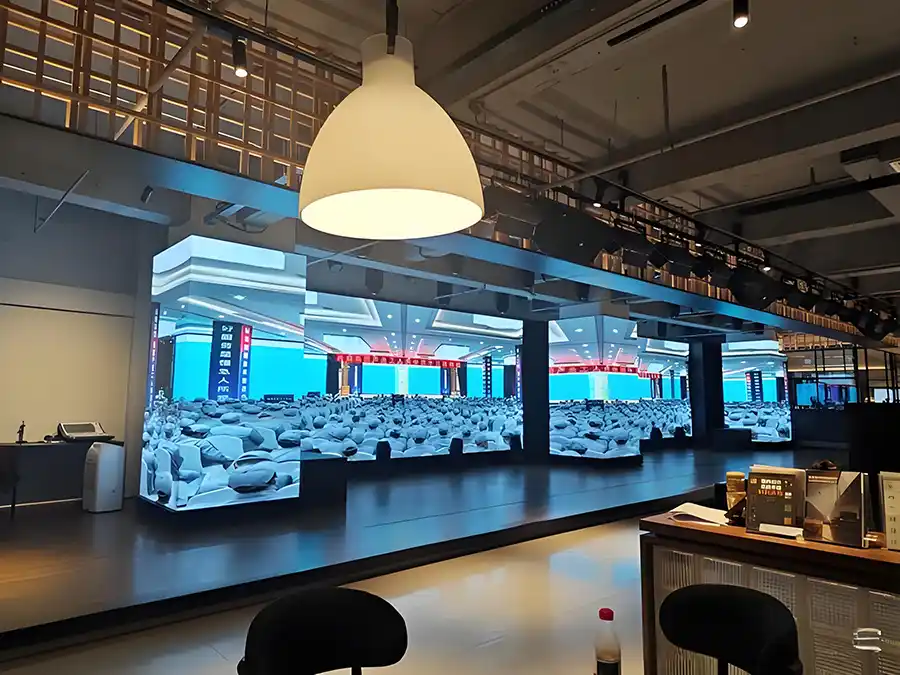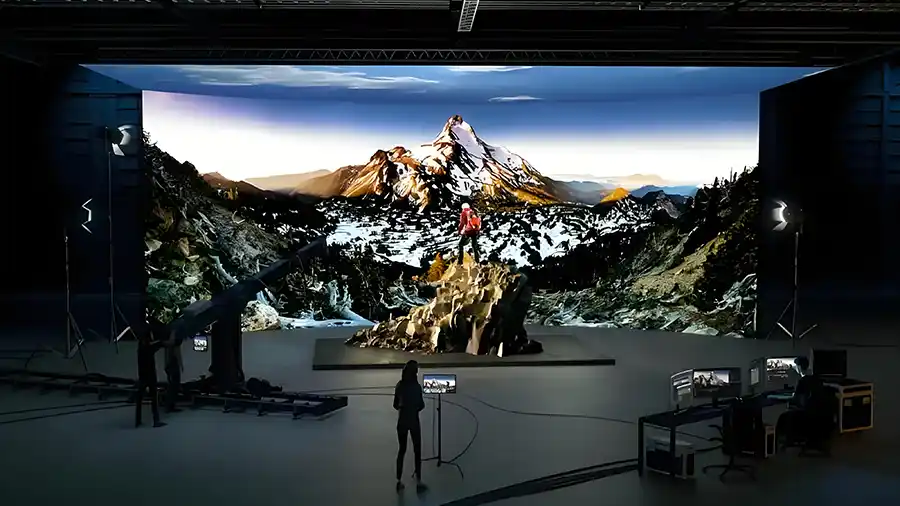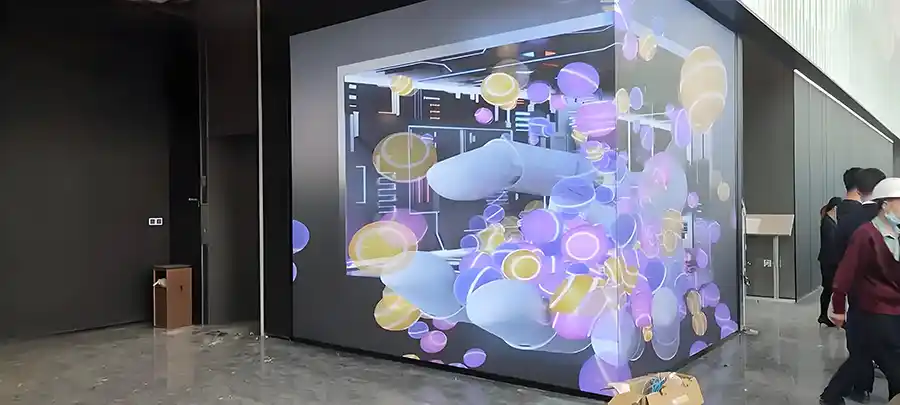In recent years, the film and content creation industries have witnessed a profound shift in how stories come to life. The LED virtual production wall has emerged as a pivotal technology, transforming traditional filmmaking by merging real-time digital environments with physical performance spaces. This fusion creates a dynamic and immersive experience for actors, directors, and audiences alike.
This article delves deep into the nuances of LED virtual production walls, explores their technical and creative innovations, offers practical comparisons, and answers some less-discussed questions to give you a well-rounded understanding.
While traditional production methods rely heavily on green screens and post-production compositing, LED virtual production walls project photorealistic environments directly onto large LED panels on set. This real-time visual feedback radically improves lighting realism and actor immersion.
But beyond that basic description lies a world of technical intricacies, creative freedom, and workflow innovations.

1. Dynamic Environmental Interaction
Unlike static backdrops, LED walls can simulate changing weather, time of day, and environmental effects that adapt on the fly. Imagine a desert scene transitioning into a thunderstorm seamlessly while shooting continues uninterrupted.
2. Camera Perspective Parallax
Advanced camera tracking allows the virtual environment on the LED wall to shift perspective precisely as the camera moves, creating true parallax and preventing the flat look common with green screen backgrounds.
3. Scalable and Modular Design
As paredes de LED modernas são modulares, o que significa que podem ser montadas em diferentes formatos e tamanhos — desde simples painéis planos até volumes totalmente curvos que envolvem os atores em mundos imersivos de 270 ou 360 graus.
4. Integração com tecnologias de captura de movimento e XR
Paredes de produção virtuais de LED são cada vez mais combinadas com ferramentas de captura de movimento (mocap) e realidade estendida (XR), permitindo que personagens virtuais e atores físicos interajam perfeitamente em cenários virtuais compartilhados.
Recurso | Tela Verde Tradicional | Parede de produção virtual de LED |
Visualização de fundo | Somente composição de pós-produção | Visualização ao vivo em tempo real |
Iluminação | Artificial, muitas vezes incompatível | Iluminação natural por meio de display LED |
Imersão do Ator | Baixo, depende da imaginação | Ambiente visual alto e real |
Perspectiva da câmera Parallax | Limitado, requer ajuste pós-fx | Preciso, com base no rastreamento em tempo real |
Tempo de produção | Mais longo, devido aos efeitos visuais e à pós-produção | Mais curto, com tomadas finais na câmera |
Flexibilidade de localização | Ilimitado, virtual | Ilimitado, virtual |
Custo do equipamento | Mais baixo na frente | Maior investimento inicial |
Flexibilidade Criativa | Moderado | Alto, dinâmico e adaptável |
Embora filmes e programas de TV tenham liderado a adoção de paredes de produção virtuais de LED, vários outros setores estão descobrindo novos casos de uso:
Desfiles de moda virtuais:Os designers projetam ambientes de passarela digitais ou fundos fantásticos, misturando modelos vivos com elementos virtuais para apresentações inovadoras.
Visualização arquitetônica:Arquitetos e clientes podem percorrer interiores e exteriores realistas de edifícios antes do início da construção, usando paredes de LED como janelas 3D interativas.
Treinamento Terapêutico e Médico:Ambientes LED imersivos simulam cenários complexos para treinamento de profissionais médicos ou ambientes terapêuticos.
Museus e exposições imersivas:Museus utilizam paredes de LED para recriar ambientes históricos e exposições interativas que envolvem os visitantes em um nível mais profundo.
Parques temáticos e atrações:Os parques temáticos criam cenários adaptáveis para brinquedos ou shows ao vivo, mudando os cenários sem a necessidade de reconstrução física do cenário.

Especificação | Alcance/Característica Ideal | Razão |
Distância entre pixels | 1,2 mm – 2,6 mm | Alta resolução para fotos de perto |
Taxa de atualização | 3840Hz ou superior | Sem cintilação para captura de câmera |
Profundidade de bits (cor) | 14 bits para 22 bits | Gradientes suaves e fidelidade de cores |
Brilho | 800 – 1500 lêndeas | Equilibra as necessidades de iluminação ambiente |
Ângulo de visão | >160 graus | Qualidade de imagem uniforme em ângulos |
Configuração de parede | Modular, curvo ou plano | Flexibilidade para necessidades criativas |
Latência | <10 milissegundos | Sincronização perfeita |
Colaboração em tempo real
Diretores, supervisores de efeitos visuais e cenógrafos podem colaborar remotamente por meio de sistemas conectados à nuvem, ajustando ambientes virtuais enquanto as filmagens acontecem. Essa integração economiza custos de viagem e acelera os ciclos de feedback.
Geração de Ambiente Assistida por IA
Ferramentas emergentes de IA ajudam a gerar ou modificar ambientes 3D com base na entrada do roteiro ou nas preferências do diretor, reduzindo a carga de trabalho manual e acelerando a pré-produção.
Configurações híbridas
Combinar cenários físicos com paredes de LED permite um equilíbrio entre realismo tátil e flexibilidade visual. Por exemplo, o exterior de uma cabana rústica pode ser um cenário real, enquanto a floresta e o céu ao redor são virtuais.
1. Como as paredes de produção virtuais de LED lidam com a reflexão sonora e a acústica no set?
Ao contrário dos palcos sonoros tradicionais, as paredes de LED podem, às vezes, criar superfícies reflexivas que afetam a acústica. As produções costumam usar materiais adicionais de absorção sonora, como painéis acústicos ou cortinas ao redor da configuração de LED, para controlar o eco e a reverberação. O posicionamento estratégico dos alto-falantes e os microfones direcionais ajudam a capturar o áudio com clareza durante as filmagens.
2. As paredes de produção virtuais de LED podem suportar filmagens estereoscópicas em 3D?
Sim, muitos sistemas avançados de parede de LED são compatíveis com técnicas de filmagem estereoscópica (3D). O principal desafio reside na calibração e sincronização precisas de duas câmeras, além de garantir que o conteúdo de LED seja renderizado corretamente para a perspectiva de cada olho. Essa capacidade aprimora a narrativa imersiva, especialmente na criação de conteúdo em RV e RA.
3. Quais são as considerações sobre o consumo de energia para grandes paredes de LED?
Grandes paredes de produção virtuais de LED consomem bastante energia, muitas vezes exigindo infraestrutura elétrica dedicada, incluindo fontes de alimentação estáveis e sistemas de backup. Painéis de LED com eficiência energética e tecnologias avançadas de resfriamento ajudam a reduzir os custos operacionais e o impacto ambiental.

4. Quão portáteis são as paredes de produção virtuais de LED?
Embora muitas paredes de LED sejam modulares, permitindo montagem e desmontagem, volumes de produção virtual em grande escala normalmente exigem espaço de estúdio dedicado devido ao seu tamanho e necessidades de infraestrutura. No entanto, configurações de paredes de LED menores ou móveis estão se tornando mais populares para filmagens e eventos em locação, oferecendo um equilíbrio entre portabilidade e escala.
5. Quais precauções de segurança são necessárias ao operar paredes de LED?
Paredes de LED geram calor e exigem sistemas elétricos robustos. Os protocolos de segurança incluem aterramento adequado, sistemas de supressão de incêndio, estruturas de amarração seguras e manutenção de rotina. Além disso, o treinamento da equipe sobre o manuseio de equipamentos eletrônicos sensíveis e procedimentos de emergência é essencial.
6. Como a calibração de cores é mantida em grandes paredes de LED?
Cor e brilho uniformes são essenciais. Ferramentas avançadas de calibração utilizam espectrômetros e software para analisar a saída de cada painel, ajustando LEDs individuais para corresponder a um perfil de cor consistente. A calibração geralmente é realizada diariamente ou antes de cada filmagem para garantir visuais perfeitos.
7. Paredes de produção virtuais de LED podem ser integradas com sistemas de câmeras robóticas ou drones?
Sim, braços robóticos, drones e equipamentos automatizados podem ser sincronizados com ambientes virtuais de produção em LED. Essa configuração permite movimentos complexos de câmera que interagem dinamicamente com o cenário virtual, expandindo as possibilidades criativas para tomadas únicas.
8. Qual o papel da mistura de bordas e do mapeamento de conteúdo em paredes de LED?
A mesclagem de bordas suaviza a transição entre painéis de LED adjacentes para criar uma imagem uniforme, sem bordas visíveis. O mapeamento de conteúdo garante que o ambiente digital corresponda às dimensões físicas e ao formato da parede de LED, especialmente importante para configurações curvas ou com formatos irregulares.
9. Como é garantida a longevidade dos painéis de LED?
Painéis de LED de alta qualidade são projetados para dezenas de milhares de horas de operação. A manutenção inclui limpeza regular, atualizações de firmware e substituição oportuna de quaisquer módulos com defeito. Ventilação e controle de temperatura adequados também prolongam a vida útil.
10. Há benefícios ambientais no uso de paredes de produção virtuais de LED em vez de filmagens tradicionais em locais diferentes?
Sim, a produção virtual reduz a necessidade de viagens, construção física de cenários e equipes grandes, o que reduz as emissões de carbono e o consumo de recursos. Muitos estúdios veem as paredes de LED como uma opção mais sustentável para produção a longo prazo.

Paredes de produção virtuais de LED são mais do que uma simples atualização tecnológica — são um convite para repensar a própria narrativa. Ao combinar precisão digital com realidade física, elas abrem novos horizontes criativos e eficiências práticas.
À medida que a inovação continua a ultrapassar limites — por meio de IA, colaboração em nuvem e integração com tecnologias emergentes — as paredes de produção virtual de LED se tornarão essenciais para a produção de filmes, eventos ao vivo e experiências imersivas em todos os setores.
Investir ou fazer parceria com tecnologia de produção virtual de LED não é mais apenas um luxo, mas um movimento estratégico em direção ao futuro da criação de conteúdo.
Se você quiser explorar como as paredes de produção virtuais de LED podem elevar seus projetos ou precisar de orientação sobre seleção de tecnologia e fluxos de trabalho, sinta-se à vontade para entrar em contato para obter insights e soluções personalizadas.
Recomendações quentes
Produtos Quentes
Obtenha um orçamento gratuito agora mesmo!
Fale com nossa equipe de vendas agora.
Se você estiver interessado em nossos produtos, entre em contato conosco o mais breve possível
Entre em contato com nossa equipe de vendas para explorar soluções personalizadas que atendam perfeitamente às necessidades do seu negócio e esclarecer quaisquer dúvidas que você possa ter.
Endereço de email:info@reissopto.comEndereço da fábrica:Edifício 6, Parque Industrial de Telas Planas Huike, nº 1, Gongye 2nd Road, Comunidade Shiyan Shilong, Distrito de Bao'an, cidade de Shenzhen, China
WhatsApp:+86177 4857 4559